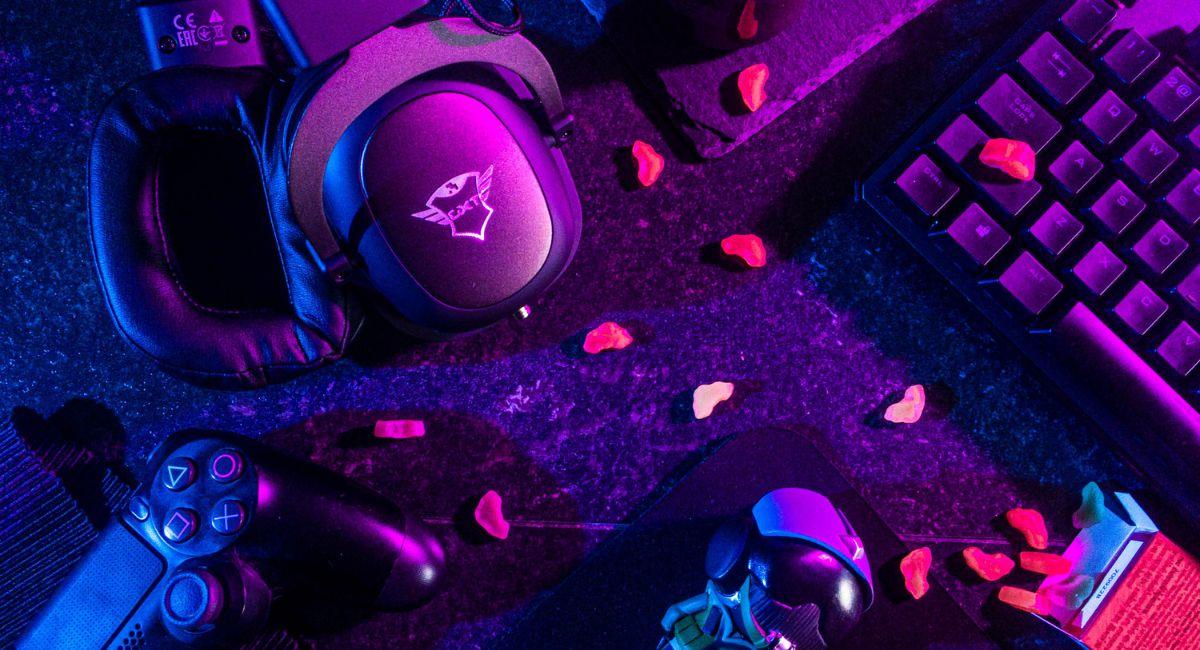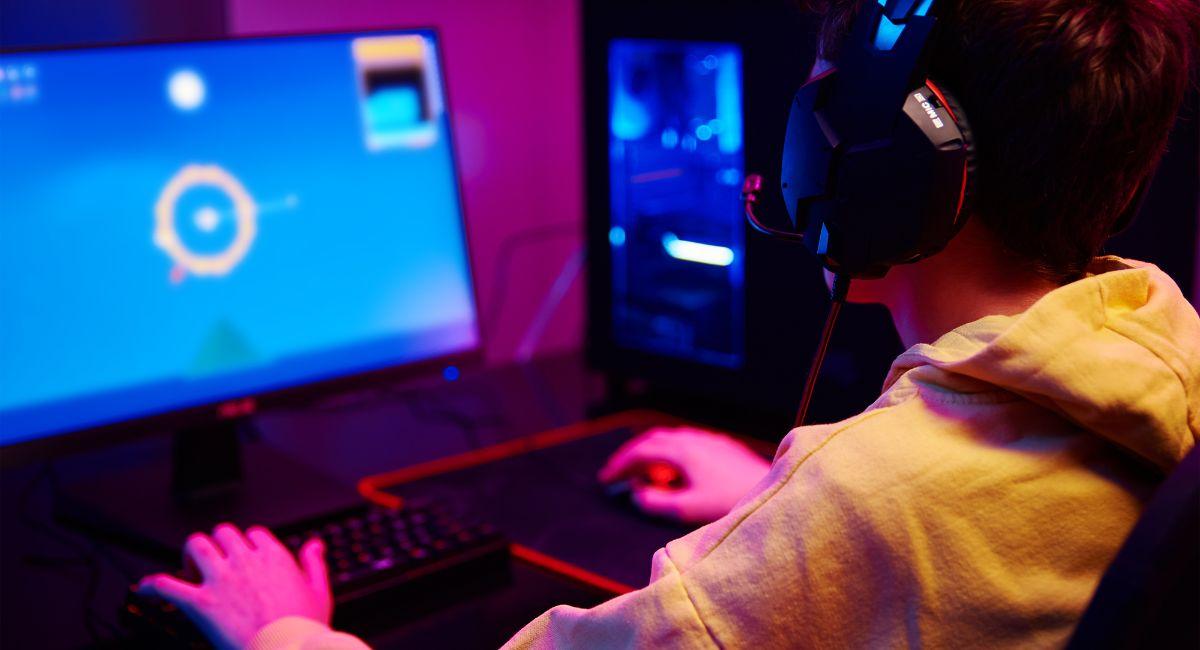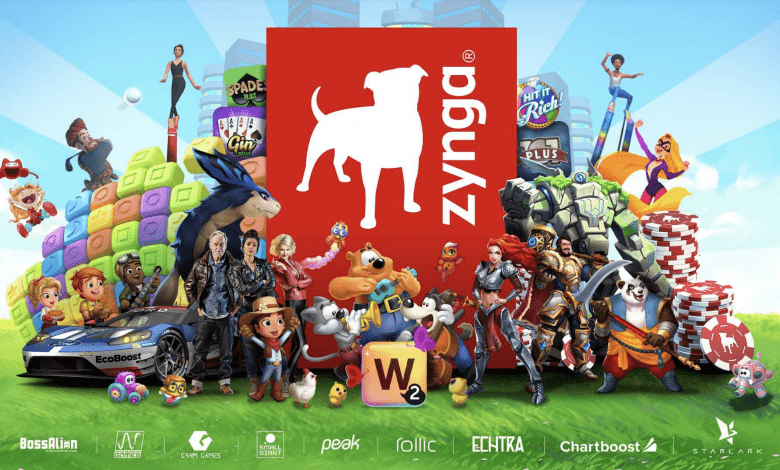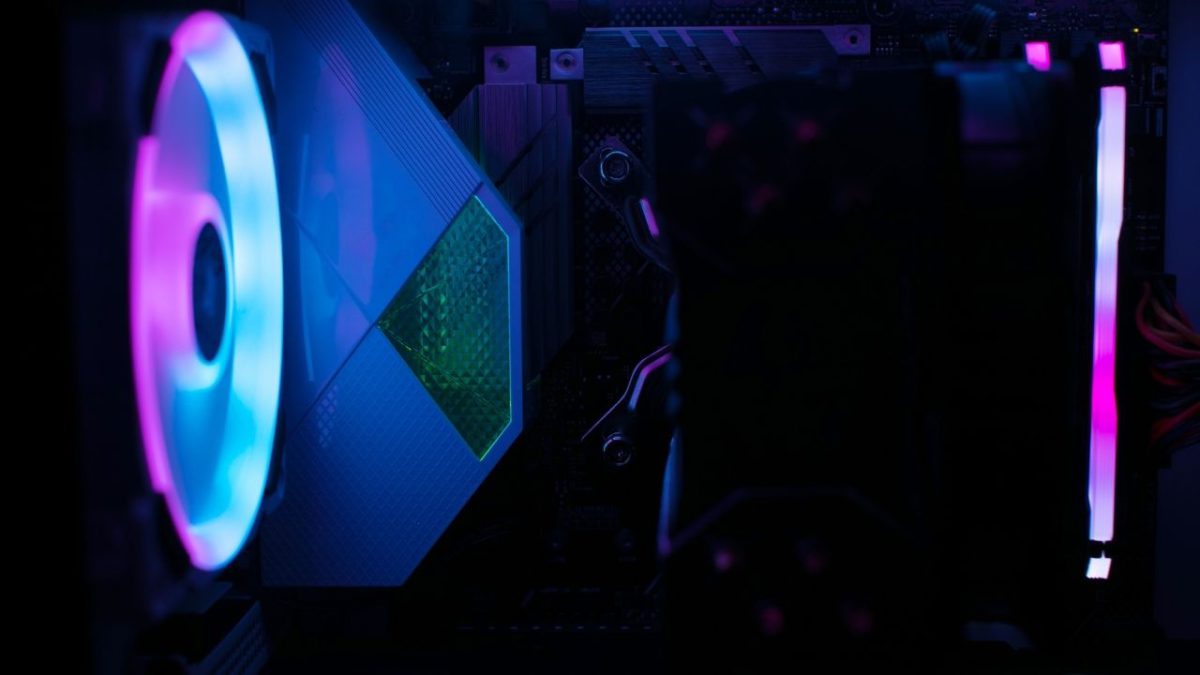Top 10 Blockchain Gaming Trends In 2024 That Will Set The Trajectory For The Future
The convergence of blockchain technology and gaming has ushered in a new era of innovation and possibilities. As we step into 2024, the landscape of blockchain gaming unfolds with captivating trends that redefine the gaming experience, introduce novel economic models, and leverage the power of decentralized technologies. This comprehensive exploration delves into the top 10 blockchain gaming trends shaping the digital frontiers in 2024.
1. Play-to-Earn Revolution:
Redefining Gaming Economics:
The play-to-earn model stands tall as a revolutionary trend in 2024, transforming gamers from mere players to active participants in virtual economies. Blockchain-based games enable users to earn real-world value by acquiring, trading, and monetizing in-game assets. NFTs (Non-Fungible Tokens) play a pivotal role, representing unique and scarce items that users can truly own, opening avenues for a sustainable play-to-earn ecosystem.
Empowering Gamers:
This trend empowers gamers with tangible rewards, fostering a deeper connection between players and the virtual worlds they inhabit. Blockchain ensures transparent ownership of assets, eliminating the traditional walled garden approach where in-game items are owned by the game developers.
2. Cross-Platform Interoperability:
Seamless Gaming Experiences:
In 2024, cross-platform interoperability takes center stage, allowing gamers to seamlessly transition between different blockchain games while retaining ownership of their assets. This interoperability is facilitated by standardized blockchain protocols that enable the exchange and use of assets across multiple gaming ecosystems.
Enhanced Gaming Ecosystems:
This trend not only enhances the gaming experience but also creates robust gaming ecosystems where assets become more versatile. Gamers can showcase their achievements or utilize in-game items across various games, providing a more interconnected and immersive gaming experience.
3. Decentralized Autonomous Organizations (DAOs) in Gaming:
Community Governance:
DAOs make a prominent entry into the gaming realm in 2024, enabling community-driven governance in gaming platforms. Through blockchain-based DAOs, players have a say in the development, updates, and decisions related to the game. This decentralized approach fosters a sense of ownership and involvement among the gaming community.
Token-based Voting:
Gamers may use governance tokens to participate in key decisions, shaping the direction of the game they love. DAOs not only decentralize decision-making but also align the interests of developers and players, creating a symbiotic relationship within the gaming ecosystem.
4. Integration of Virtual Reality (VR) and Blockchain:
Immersive Gaming Experiences:
Virtual Reality and blockchain join forces in 2024 to create truly immersive gaming experiences. Blockchain ensures the ownership and scarcity of virtual assets, while VR technology plunges players into realistic and interactive digital worlds. This convergence opens the door to entirely new dimensions of gameplay and social interaction.
Tokenized Virtual Real Estate:
Blockchain in VR gaming extends beyond in-game assets, introducing tokenized virtual real estate. Players can own, develop, and trade virtual lands using blockchain technology. This trend blurs the lines between the virtual and real worlds, providing gamers with unprecedented opportunities for creativity and investment.
5. Dynamic NFT Marketplaces for Gaming:
Fluid Asset Trading:
The NFT marketplace for blockchain gaming experiences a dynamic shift in 2024, evolving into a hub for fluid asset trading. Gamers can buy, sell, and trade in-game items, characters, and even entire accounts directly on blockchain-based marketplaces. This decentralized approach ensures transparency, security, and fair value for both buyers and sellers.
Collaboration with Traditional Platforms:
Major gaming platforms may collaborate with blockchain-based NFT marketplaces, allowing for the seamless integration of blockchain assets into traditional gaming environments. This collaboration bridges the gap between blockchain gaming enthusiasts and the wider gaming community.
6. Provably Fair Gameplay:
Transparent Game Mechanics:
Blockchain introduces provably fair gameplay, ensuring that game mechanics are transparent and verifiable. Smart contracts on the blockchain provide a tamper-proof record of game rules and outcomes, assuring players of the fairness of the gaming environment.
Trustless Gaming Platforms:
The trend towards provably fair gameplay eliminates the need for trust in centralized entities. Gamers can engage in trustless interactions, confident that the rules of the game are enforced by immutable smart contracts on the blockchain.
7. Blockchain-based In-Game Economies:
Tokenized In-Game Currencies:
In 2024, many games adopt blockchain-based in-game economies, featuring tokenized currencies that operate on decentralized networks. These tokens can be earned, traded, or utilized within the game ecosystem, creating a robust and player-centric economic model.
Enhanced Monetization for Developers:
Blockchain-based in-game economies not only benefit players but also provide new monetization avenues for developers. Developers can create and sell in-game assets, receive a share of transactions on the secondary market, and introduce novel economic models that align the interests of developers and players.
8. Blockchain Scalability Solutions:
Overcoming Scalability Challenges:
Recognizing the importance of scalability, blockchain gaming trends in 2024 showcase the integration of advanced scalability solutions. Layer 2 solutions, sidechains, and optimized consensus mechanisms address the scalability challenges inherent in blockchain networks, ensuring smooth and fast-paced gaming experiences.
Enhanced User Experience:
Scalability solutions contribute to a more seamless and user-friendly gaming experience, eliminating common issues such as high transaction fees and slow confirmation times. Gamers can engage in blockchain games without facing the scalability bottlenecks of previous years.
9. AI and Blockchain Synergy:
Intelligent In-Game Systems:
The synergy between Artificial Intelligence (AI) and blockchain emerges as a trend that enhances in-game systems. AI algorithms, powered by blockchain data, can create dynamic and adaptive in-game environments. This fusion results in more responsive Non-Player Characters (NPCs), personalized gaming experiences, and intricate AI-driven narratives.
Player Behavior Analysis:
AI, coupled with blockchain, enables sophisticated player behavior analysis. This analysis can be used to dynamically adjust in-game challenges, rewards, and narratives based on individual player preferences and playing styles, creating a tailored and engaging gaming experience.
10. Blockchain Gaming for Social Impact:
Charitable Initiatives:
In 2024, blockchain gaming transcends entertainment, embracing social impact initiatives. Games with a purpose emerge, integrating blockchain to facilitate charitable contributions and donations. Players can engage in meaningful gameplay experiences while contributing to various social causes through blockchain-based transparency and traceability.
Education and Skill Development:
Blockchain gaming platforms may also focus on education and skill development. Games designed to enhance cognitive abilities, creativity, and problem-solving skills leverage blockchain for transparent skill validation and recognition, creating a symbiotic relationship between entertainment and personal development.
What is happening over at @ReaktorToken 🔥🚀 $RKR
We will tell you a little of why it’s beginning to take off:✅ AAA+ built game @MinionsOfSteel BETA LIVE
✅ Its own in house custom-built L1 POW Gaming blockchain
✅ Live active miner on the @ReaktorToken website: mining gRKR… pic.twitter.com/OfrhaeVT6R— Lion’s Share Group (@Lions_Share_) January 5, 2024

In the ever-evolving landscape of blockchain gaming, the pursuit of innovation continues to propel the industry forward. As we stand at the threshold of the future, several trends and developments point towards the next big thing in blockchain gaming. This detailed exploration unveils the emerging elements that promise to reshape the gaming experience, redefine ownership structures, and amplify the synergy between blockchain technology and the gaming realm.
1. Metaverse Integration:
Defining the Digital Frontier:
The next big thing in blockchain gaming revolves around the seamless integration of metaverse concepts. The metaverse, a collective virtual shared space, is set to become a pivotal element in blockchain gaming. Players will transcend individual game boundaries, entering a dynamic and interconnected universe where assets, characters, and experiences flow seamlessly between different games and virtual environments.
Persistent Universes:
Blockchain enables the creation of persistent universes within the metaverse, where players’ actions and assets retain value and relevance across diverse gaming experiences. This interconnected metaverse fosters a sense of continuity, encouraging players to explore, trade, and interact in a boundless digital realm.
2. Decentralized Game Development:
Empowering Game Creators:
The next frontier in blockchain gaming involves the decentralization of game development. Blockchain technology enables decentralized autonomous organizations (DAOs) where community members, including players and developers, actively participate in decision-making processes. This democratic approach empowers creators, enhances community engagement, and ensures that games evolve based on the collective vision of the community.
Tokenized Development:
Decentralized game development may involve tokenized ownership structures, where contributors receive tokens representing a stake in the game’s success. This not only aligns the interests of developers and players but also introduces innovative funding models, transforming how games are conceptualized, funded, and maintained.
3. Advanced Non-Fungible Token (NFT) Standards:
Dynamic Asset Representation:
The evolution of NFT standards stands out as a significant trend in blockchain gaming. The next big thing involves the development of advanced NFT standards that go beyond static digital assets. Dynamic NFTs may represent assets that can evolve, level up, or change based on in-game achievements or player interactions, adding a layer of dynamism to virtual possessions.
Interoperability and Customization:
Enhanced NFT standards contribute to greater interoperability and customization. Players can seamlessly use their NFTs across various games and platforms, unlocking new levels of personalization and value. The ability to modify, upgrade, or combine NFTs adds depth to the ownership experience, creating unique and truly personalized in-game assets.
4. Decentralized Finance (DeFi) Gaming Ecosystems:
Play-to-Earn Synergies:
The fusion of decentralized finance (DeFi) and gaming ecosystems emerges as a transformative trend. DeFi protocols integrated into blockchain games enable sophisticated economic models where players can stake assets, participate in liquidity pools, and earn yields. This play-to-earn synergy enhances the economic sustainability of virtual worlds, creating new avenues for player engagement.
Decentralized Exchanges within Games:
The next big thing involves the integration of decentralized exchanges directly within games. Players can seamlessly trade in-game assets, currencies, and NFTs without relying on external platforms. This decentralized exchange functionality adds a layer of financial autonomy to the gaming experience, empowering players with direct control over their virtual economies.
5. Blockchain-based Artificial Intelligence (AI) NPCs:
Dynamic and Responsive Gameplay:
The convergence of blockchain and AI introduces the concept of blockchain-based AI non-player characters (NPCs). These NPCs leverage blockchain data to dynamically adapt to player behavior, creating more responsive and immersive gameplay experiences. Blockchain ensures the integrity and transparency of NPC behavior, enhancing the unpredictability and intelligence of in-game adversaries.
AI-Driven Storylines:
Blockchain-powered AI NPCs can contribute to evolving and branching storylines within games. The decisions and interactions of players influence the direction of the narrative, providing a level of storytelling depth that adapts to the choices made by individual players. This dynamic narrative experience adds a layer of personalization and unpredictability to blockchain gaming.
6. Environmental Sustainability Initiatives:
Green Blockchain Solutions:
The next big thing in blockchain gaming extends beyond the virtual realm to address environmental concerns. Blockchain platforms are actively exploring and adopting environmentally sustainable consensus mechanisms, such as Proof-of-Stake (PoS). This move towards green blockchain solutions reflects a commitment to mitigating the carbon footprint associated with energy-intensive blockchain networks.
Carbon-Neutral Gaming:
Blockchain games may incorporate carbon offset initiatives, making them more environmentally responsible. Players may be given the option to contribute to carbon offset projects within the game environment, aligning virtual experiences with real-world sustainability goals. This trend positions blockchain gaming as a responsible and eco-conscious form of entertainment.
7. Integration of Augmented Reality (AR):
Blurring Virtual and Physical Realities:
The integration of augmented reality (AR) into blockchain gaming marks a significant leap in merging virtual and physical realities. AR technology overlays digital elements onto the real-world environment, creating immersive and interactive experiences. Blockchain ensures the authenticity and ownership of AR assets, allowing players to engage with AR-enhanced gaming experiences in real-world locations.
Location-Based Gaming Experiences:
Blockchain-based AR gaming introduces location-based experiences, where in-game assets and events are tied to specific physical locations. This trend encourages players to explore the real world, discover hidden treasures, and engage in location-specific quests, transforming the gaming landscape into a dynamic and interconnected tapestry.
The next big thing in blockchain gaming unfolds as a convergence of technological advancements, economic innovations, and a commitment to environmental sustainability. The intersection of metaverse integration, decentralized game development, advanced NFT standards, DeFi gaming ecosystems, blockchain-based AI NPCs, environmental sustainability initiatives, and the integration of AR signals a paradigm shift in the gaming industry.
As players navigate this dynamic landscape, they become active participants in shaping the future of blockchain gaming. The boundaries between virtual and real worlds blur, and the gaming experience transcends traditional paradigms. The journey ahead promises an era where blockchain technology not only enhances gameplay but also redefines the very essence of ownership, community, and the limitless possibilities of the digital frontier.
What is the next evolution of Blockchain gaming?

As we stand on the cusp of technological advancement, the next evolution of blockchain gaming beckons, promising a transformative journey into uncharted realms of innovation and immersive experiences. This comprehensive exploration delves into the multifaceted dimensions that define the forthcoming evolution, encompassing groundbreaking technologies, economic paradigms, and a reimagining of the gaming landscape.
1. Quantum-Secure Blockchain:
Fortifying Security:
The next evolution of blockchain gaming unfolds with the integration of quantum-resistant cryptographic algorithms. As quantum computing poses a potential threat to traditional cryptographic methods, the gaming industry embraces quantum-secure blockchain solutions. This evolution fortifies the security of in-game assets, transactions, and player data, ensuring a resilient foundation for the future.
Quantum-Secure NFTs:
Quantum-secure blockchain extends to Non-Fungible Tokens (NFTs), introducing cryptographic standards resistant to quantum attacks. This evolution safeguards the uniqueness and ownership of virtual assets in a quantum-computing era, assuring players that their digital possessions remain secure and immutable.
2. Interoperable Virtual Realms:
Seamless Cross-Reality Experiences:
The next evolution envisions a seamless integration of virtual realms, transcending the boundaries between different blockchain games and platforms. Interoperability becomes a cornerstone, allowing players to navigate a unified metaverse where assets, characters, and experiences seamlessly traverse various gaming ecosystems.
Cross-Reality Asset Migration:
Players experience a new level of freedom with cross-reality asset migration. In this evolution, virtual assets can move fluidly between augmented reality, virtual reality, and traditional online gaming environments. This interconnected metaverse amplifies player agency, offering a dynamic and cohesive gaming experience across diverse realities.
3. Decentralized Autonomous Gaming Organizations (DAGOs):
Community-Driven Governance:
The evolution of decentralized autonomous gaming organizations (DAGOs) marks a paradigm shift in game development and governance. DAGOs empower the gaming community to actively participate in decision-making processes, from development roadmaps to in-game mechanics. Community-driven governance becomes the cornerstone of this evolution, fostering a sense of ownership and collaboration.
Tokenized Community Incentives:
DAGOs utilize tokenized incentives to reward community contributions. Players, developers, and other stakeholders earn governance tokens for their participation, creating a decentralized and meritocratic ecosystem. This evolution aligns the interests of the gaming community, promoting a more inclusive and collaborative development model.
4. Dynamic On-Chain Procedural Content Generation:
Infinite Gaming Worlds:
The next evolution introduces dynamic on-chain procedural content generation, revolutionizing the creation of gaming environments. Smart contracts on the blockchain govern the generation of in-game content, from landscapes to quests. This evolution results in infinitely diverse and evolving gaming worlds, providing players with novel and unpredictable experiences.
Player-Driven Content Creation:
Blockchain-based procedural content generation enables players to actively contribute to the creation of in-game content. Through decentralized tools and platforms, players can shape the virtual landscapes, design quests, and introduce unique elements to the gaming universe. This evolution blurs the lines between developers and players, fostering a collaborative approach to world-building.
5. Deeper Integration of Artificial Intelligence (AI):
Sentient NPCs and Adaptive Storylines:
The evolution of blockchain gaming sees a deeper integration of artificial intelligence (AI) to create sentient NPCs and adaptive storylines. AI-driven characters within games become more responsive, capable of learning from player interactions and adapting their behavior. This evolution results in dynamic and personalized narratives tailored to individual player experiences.
AI-Enhanced Game Mechanics:
Blockchain gaming evolves with AI-enhanced game mechanics that respond in real-time to player choices and strategies. From challenging opponents to puzzle difficulty levels, AI algorithms optimize the gaming experience, ensuring a continuous and engaging flow. This synergy between blockchain and AI elevates the sophistication of in-game systems.
6. Sustainable Blockchain Ecosystems:
Green Consensus Mechanisms:
The next evolution places a heightened focus on environmental sustainability within blockchain gaming. Green consensus mechanisms, such as Proof-of-Stake (PoS) and energy-efficient protocols, become industry standards. This evolution addresses concerns about the environmental impact of blockchain networks, fostering a responsible and eco-friendly gaming ecosystem.
Carbon-Neutral Gaming Initiatives:
Blockchain gaming platforms embark on carbon-neutral initiatives, offsetting their environmental footprint. Players may have the option to participate in carbon-neutral gaming experiences, contributing to reforestation or renewable energy projects through in-game activities. This evolution aligns blockchain gaming with broader sustainability goals.
7. Tokenized Virtual Governance:
Player-Driven Development:
The next evolution introduces tokenized virtual governance, where players hold governance tokens that influence the development and direction of the game. This tokenized voting system empowers players to have a direct say in proposed changes, updates, and new features. The evolution of tokenized virtual governance democratizes the decision-making process, enhancing player agency.
Decentralized Funding Models:
Tokenized governance extends to decentralized funding models, allowing players to collectively fund in-game projects or features through token contributions. This evolution transforms the traditional funding landscape, enabling community-driven initiatives and crowdfunding campaigns within the gaming ecosystem.
As we embark on the journey into the next evolution of blockchain gaming, the convergence of quantum-secure blockchain, interoperable virtual realms, decentralized autonomous gaming organizations, dynamic on-chain procedural content generation, AI integration, sustainable blockchain ecosystems, and tokenized virtual governance paints a canvas of unprecedented possibilities.
The gaming landscape transcends its traditional boundaries, offering players a dynamic and interconnected metaverse where creativity, collaboration, and innovation thrive. The next evolution is not just a technological advancement; it’s a reimagining of the very essence of gaming—an exploration into uncharted realms where the digital frontier unfolds in ways yet to be fully discovered. The future of blockchain gaming is an odyssey into the unknown, and the players themselves are the architects of this bold and transformative journey.
Conclusion: A Dynamic Future Unfolds
As we traverse the digital frontiers of 2024, the top 10 blockchain gaming trends paint a vivid picture of a dynamic and immersive future. The synergy of blockchain, NFTs, VR, AI, and decentralized governance reshapes gaming ecosystems, placing players at the center of unprecedented opportunities.
These trends not only redefine how we play but also challenge traditional notions of ownership, governance, and economic models within the gaming industry. The convergence of technology and creativity propels blockchain gaming into a realm where the boundaries between reality and virtual worlds blur, offering gamers an ever-expanding universe of possibilities. The future of blockchain gaming is a canvas of endless innovation, waiting to be explored, experienced, and shaped by the gaming community at large.
Also read- Your Perfect Guide To Player Liquidity In The World Of Blockchain Gaming
Stay informed with daily updates from Blockchain Magazine on Google News. Click here to follow us and mark as favorite: [Blockchain Magazine on Google News].
Get Blockchain Insights In Inbox
Stay ahead of the curve with expert analysis and market updates.
latest from tech
Disclaimer: Any post shared by a third-party agency are sponsored and Blockchain Magazine has no views on any such posts. The views and opinions expressed in this post are those of the clients and do not necessarily reflect the official policy or position of Blockchain Magazine. The information provided in this post is for informational purposes only and should not be considered as financial, investment, or professional advice. Blockchain Magazine does not endorse or promote any specific products, services, or companies mentioned in this posts. Readers are encouraged to conduct their own research and consult with a qualified professional before making any financial decisions.

 Bitcoin
Bitcoin  Ethereum
Ethereum  Tether
Tether  XRP
XRP  Solana
Solana  Dogecoin
Dogecoin  USDC
USDC  Lido Staked Ether
Lido Staked Ether  Cardano
Cardano  TRON
TRON  Avalanche
Avalanche  Toncoin
Toncoin  Chainlink
Chainlink  Wrapped stETH
Wrapped stETH  Shiba Inu
Shiba Inu  Sui
Sui  Wrapped Bitcoin
Wrapped Bitcoin  Hedera
Hedera  Stellar
Stellar  Polkadot
Polkadot  WETH
WETH  Bitcoin Cash
Bitcoin Cash  Hyperliquid
Hyperliquid  Uniswap
Uniswap  LEO Token
LEO Token  Litecoin
Litecoin  Pepe
Pepe  Wrapped eETH
Wrapped eETH  NEAR Protocol
NEAR Protocol  Ethena USDe
Ethena USDe  USDS
USDS  Aave
Aave  Aptos
Aptos  Internet Computer
Internet Computer  Cronos
Cronos  POL (ex-MATIC)
POL (ex-MATIC)  Mantle
Mantle  Ethereum Classic
Ethereum Classic  Render
Render  Bittensor
Bittensor  WhiteBIT Coin
WhiteBIT Coin  Monero
Monero  Artificial Superintelligence Alliance
Artificial Superintelligence Alliance  MANTRA
MANTRA  Dai
Dai  Arbitrum
Arbitrum  Virtuals Protocol
Virtuals Protocol 


